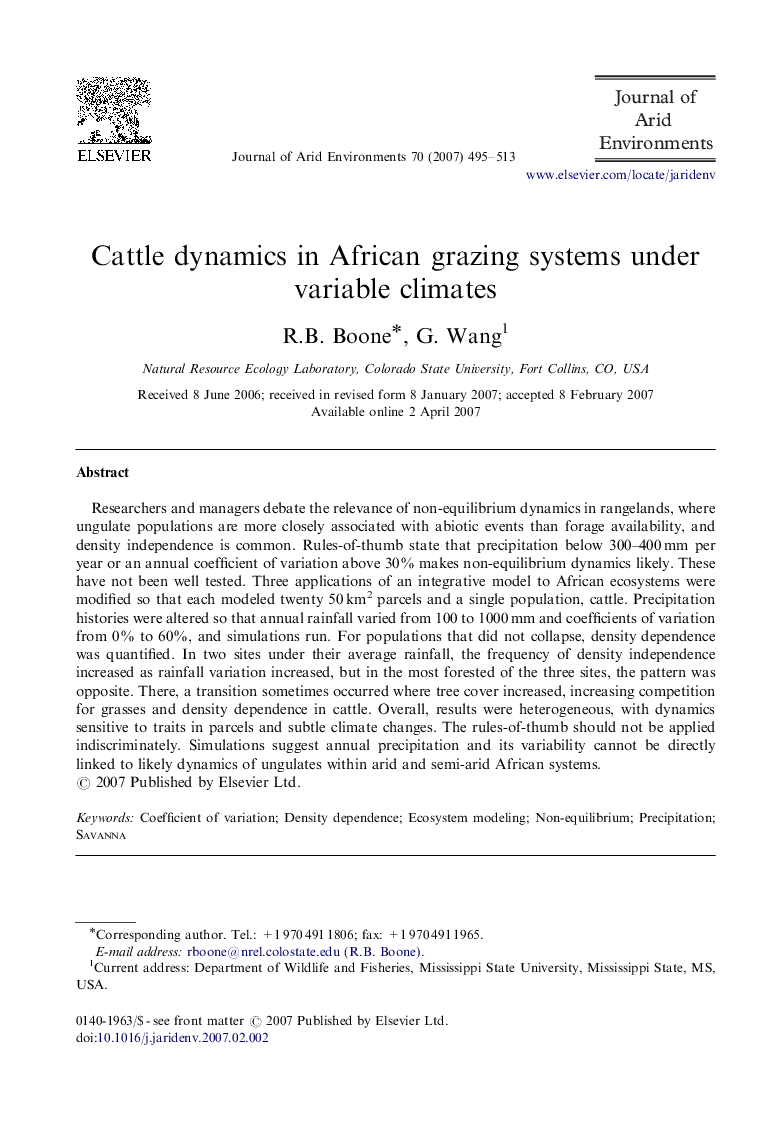| Article ID | Journal | Published Year | Pages | File Type |
|---|---|---|---|---|
| 4394530 | Journal of Arid Environments | 2007 | 19 Pages |
Researchers and managers debate the relevance of non-equilibrium dynamics in rangelands, where ungulate populations are more closely associated with abiotic events than forage availability, and density independence is common. Rules-of-thumb state that precipitation below 300–400 mm per year or an annual coefficient of variation above 30% makes non-equilibrium dynamics likely. These have not been well tested. Three applications of an integrative model to African ecosystems were modified so that each modeled twenty 50 km2 parcels and a single population, cattle. Precipitation histories were altered so that annual rainfall varied from 100 to 1000 mm and coefficients of variation from 0% to 60%, and simulations run. For populations that did not collapse, density dependence was quantified. In two sites under their average rainfall, the frequency of density independence increased as rainfall variation increased, but in the most forested of the three sites, the pattern was opposite. There, a transition sometimes occurred where tree cover increased, increasing competition for grasses and density dependence in cattle. Overall, results were heterogeneous, with dynamics sensitive to traits in parcels and subtle climate changes. The rules-of-thumb should not be applied indiscriminately. Simulations suggest annual precipitation and its variability cannot be directly linked to likely dynamics of ungulates within arid and semi-arid African systems.
